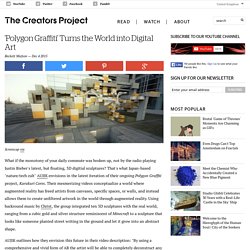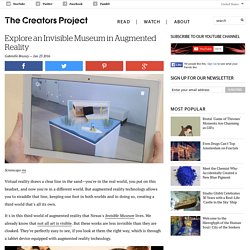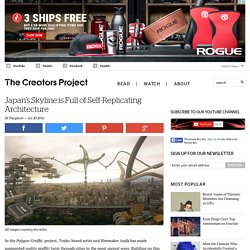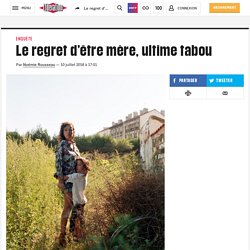

Disnovation. FUTURS NON CONFORMES #2. #2 PASSAGES À L’ACTE Techno-critique, activisme et émancipation par le détournement de la technologie Une exposition proposée par Nicolas Maigret et Maria Roszkowska, artistes (disnovation.org) October 2016 – April 2017 FUTURS NON-CONFORMES émet l’hypothèse d’une « propagande de l’innovation » qui devient ici le point de convergence d’un ensemble de contre-stratégies artistiques de nature critique, expérimentale et spéculative.

Faisant suite à une apologie du progrès en place depuis la Renaissance, le lexique de l’innovation est aujourd’hui l’instrument rhétorique par excellence. Il inonde le discours dominant, se déployant depuis le domaine politique jusque dans les champs du travail, de l’éducation ou de l’art. Ce phénomène a largement contribué à instaurer les technosciences comme système de croyance par défaut, et le binôme consommation / innovation comme moteur central du système économique global. 'Polygon Graffiti' Turns the World into Digital Art. Screencap via What if the monotony of your daily commute was broken up, not by the radio playing Justin Bieber's latest, but floating, 3D digitial sculptures?

That's what Japan-based "nature/tech cult" AUJIK envisions in the latest iteration of their ongoing Polygon Graffiti project, Karakuri Cores. Their mesmerizing videos conceptualize a world where augmented reality has freed artists from canvases, specific spaces, or walls, and instead allows them to create unfiltered artwork in the world through augmented reality. Using backround music by Christ, the group integrated ten 3D sculptures with the real world, ranging from a cubic gold and silver structure reminiscent of Minecraft to a sculpture that looks like someone planted street writing in the ground and let it grow into an abstract shape.
In the past, AUJIK has taken us on a journey through human lymph nodes and conducted an interview with an artificially intelligent machine. See more of AUJIK's work on Vimeo. Related: Explore an Invisible Museum in Augmented Reality. Screencaps via Virtual reality draws a clear line in the sand—you're in the real world, you put on this headset, and now you're in a different world.

But augmented reality technology allows you to straddle that line, keeping one foot in both worlds and in doing so, creating a third world that's all its own. It's in this third world of augmented reality that Nexus's Invisible Museum lives. We already know that not all art is visible. But these works are less invisible than they are cloaked. To learn more about Invisible Museum, click here. Related: Sculptures Come to Life in an Augmented Reality Art Gallery New Augmented Reality Prototype Can Make Any Object A Touch Sensitive Visual Display This Museum Displays Stolen Artworks in Augmented Reality. Japan’s Skyline is Full of Self-Replicating Architecture. All images courtesy the artist In the Polygon Graffiti project, Toyko-based artist and filmmaker Aujik has made augmented reality graffiti twist through cities in the most surreal ways.

Building on this work, Aujik released a test for an upcoming project titled Spatial clusters, in which architecture defies physics by snaking through the cityscape. Last week, Aujik dropped the full video, Spatial Bodies, a refined vision of the project. Influenced by the video game Katamari Damacy, Italian Futurism, and Taiwanese architect Lee Guō's thoughts on the multiplicity of architectural clusters, the video shows the cities of Tokyo and Osaka as playgrounds for the twisting and turning of buildings—most of it static, but some of it in motion. “Spatial Bodies depicts the urban landscape and architectural bodies as an autonomous living and self-replicating organism,” Aujik tells The Creators Project. Aujik has been planning Spatial Bodies for years. Watch the full video below: Related: Le regret d’être mère, ultime tabou.
Elles aiment leurs enfants, mais regrettent d’être mères.

Voilà la population analysée par la sociologue israélienne Orna Donath. A la question «si vous pouviez revenir en arrière dans le temps, avec la connaissance et l’expérience que vous avez aujourd’hui, seriez-vous une mère ?» , elles ont toutes répondu non. Vingt-trois femmes âgées de 25 à 75 ans ne le referaient pas. Certaines ont éprouvé ce regret dès la naissance, et il persiste depuis des décennies. L’étude, «Regretting Motherhood : A Sociopolitical Analysis», publiée à l’hiver 2015 (1), a depuis été commentée partout dans le monde, de la Suisse au Brésil.
À LA RECHERCHE DE L'IMMORTALITÉ, QUÊTE TECHNOLOGIQUE OU PHILOSOPHIQUE ?